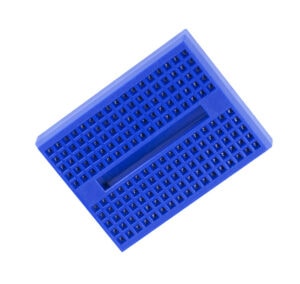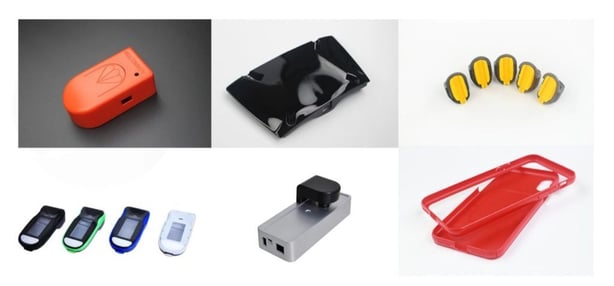Intro
Urethane casting might be the perfect solution to your company’s problem. When it comes to affordable, fast, customizable products made in medium quantities, many people choose urethane casting.
In this piece, we’ll explain what urethane casting is. We’ll include the process of making a mold, different materials you can consider, the great benefits of this technology, and even some real-world examples of urethane casting.
What is Urethane Casting?
Urethane casting is when a manufacturer injects polyurethane and added resins into a soft mold. The mold is typically made of silicone elastomers.
If you’re familiar with injection molding, you have a good idea of how urethane casting works.
Unlike injection molding, however, urethane casts are only good for low-run and medium-run production batches. You shouldn’t expect to get thousands of units from a single mold. It’s all thanks to the material composition.
The silicone will wear out quicker than metals or hard materials used with injection molding.
Still, the tooling and upfront costs of urethane casting are usually a lot less expensive than injection molding. It’s much faster, too.
The Process of Urethane Casting
Even if you’re starting from scratch, the process of urethane casting is pretty straightforward.
Start with a CAD Model
It all starts with a CAD model. Unlike typical designing, this model is going to make up the negative space of your finished part. It takes some experience in mold making to correctly design a CAD model for urethane casting.
The designer will avoid things like small holes, narrow geometries, and channels in the part.
The model also requires gates and vents. Gates are where the curatives and resins are going to be injected. Vents are locations where air can escape as material is added.
There are a lot of unique design considerations when it comes to making a CAD model for a mold. We’ll avoid going through all of them now.
Creating Silicone Tooling
The next step is to pick the right silicone mixture. There are a number of different ways to formulate and create these silicone mixtures according to durometer required and casted component features.
Once silicone mixture is chosen, a master pattern of your CAD model is created. This can be done via 3D Printing, Machining or any other fabrication method. The master pattern is finished to resemble the desired end component. Everything from surface finish to engraving or logos.
When the master pattern is completed it is then encased into the silicone mixture which is then allowed to cure. The master pattern is then removed, leaving a cavity in the silicone that holds the geometry of the end use part.
Casting the Urethane

Now that you have a mold, polyurethane can be poured and your product can be created.
It’s important to pick the right urethane during this step. This is also an area where a little experience goes a long way.
To cast, two liquids are involved: the curative and the resin. When both are combined, you’re left with a solid, strong urethane unit.
The silicone mold is pressed together, and the two liquids are pumped into the mold. Once cured, the mold will be separated so the urethane can be removed from the mold.
Secondary Operation
Most urethane molding also includes a secondary operation. This is when the parts are sanded and smoothed, additional features are added, and imperfections are cleared up.
At the end of this step, you have a finished part.
Materials You Can Use in Urethane Casting
As we alluded to earlier, there are a number of different materials that can be used in urethane casting. You have over 5,000 resins available on the market. Rapid Axis keeps 85 of the most frequently used in stock. You can emulate end-use materials such as Nylon, ABS, PC. There are fire rated materials and fiber additive materials as well.
Each of these materials has its pros and cons. A urethane casting expert will help you make the right selection for your finished product.
Benefits of Urethane Casting
Why do so many people choose urethane casting? There are plenty of benefits.
Quick Runs and Bridge Manufacturing
The master pattern and silicone casting processes to make a urethane mold might just take a few days. From there, making units in the mold is quick and easy.
This converts to quicker turnarounds and faster runs for your operation. You can have product ready for consumers quickly or while you wait for your a aluminum or steel tool. Also due to the low upfront cost you can have product ready before finalizing design.
Low Upfront Cost
The upfront tooling, master pattern fabrication, and designing costs are much lower for urethane casting as compared to injection molding.
This is a huge deal for people who are looking to make small-batch runs without spending a lot of money or in cases where the customer plans to change their revision. When it comes to proving a concept or trial-and-error work, it’s hard to beat urethane casting.
Adjustable Material Properties
Since there are so many materials to choose from, you can customize the material properties of your final product. Tweak things like how firm it is, the overall strength, and the shock-absorbing nature of the product.
Comparatively, metals don’t have the same customizability. It’s a matter of choosing the right metal out of a handful of options and dealing with the downsides.
prototechasia.com
Common Applications for Urethane Casting
You might find a urethane-cast product in a number of different places. Thanks to the benefits of urethane casting, manufacturers opt for this technique for making:
-Medical Devices
-Enclosures
-Bezels
-Handles
-Mechanical Components
Conclusion
Urethane casting is a great manufacturing method for a number of different industries and applications. It’s a low-cost, high-speed technique to fabricate low-run and medium-run batches of products. If you want to get started with a professional urethane casting company today, reach out to our team at Rapid Axis. This is just one of the many expert services that we offer to companies across the country.


